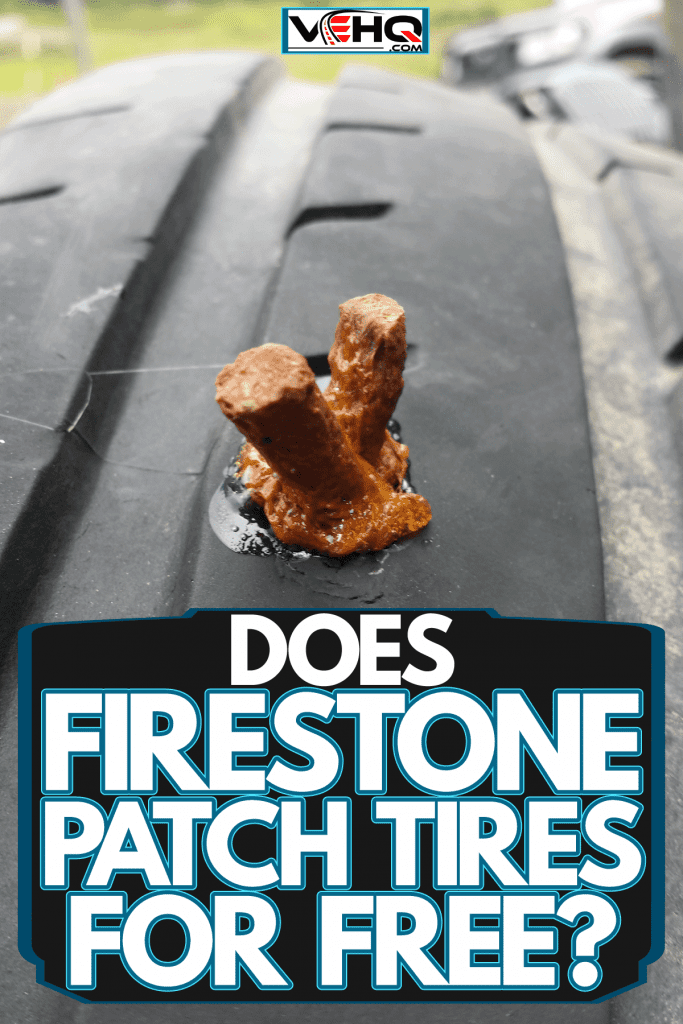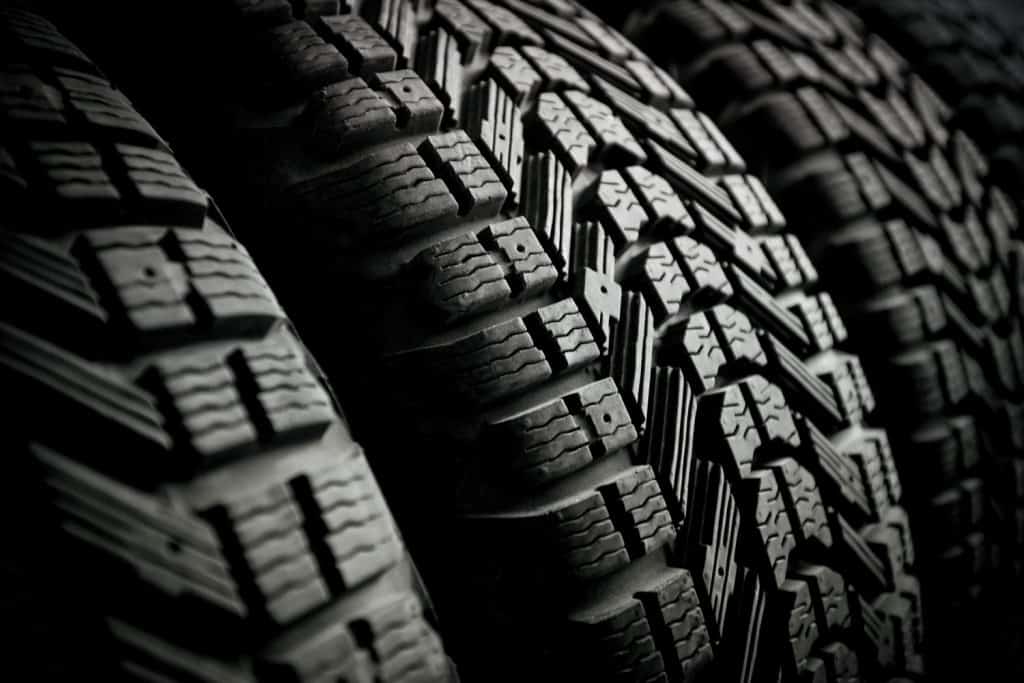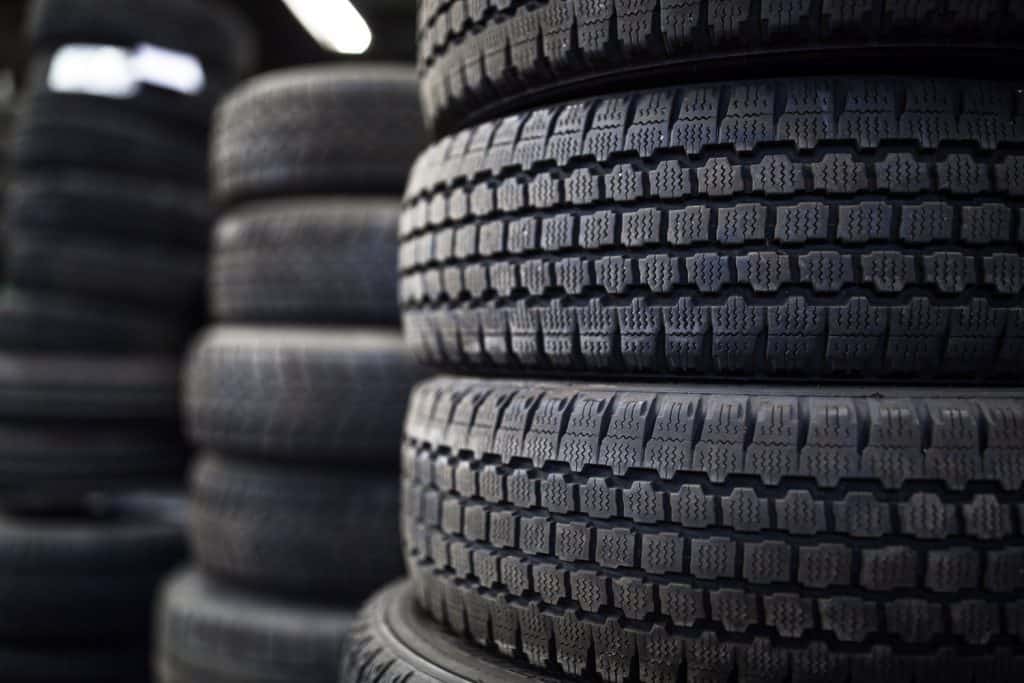As many tire brands will offer guarantees, you might be wondering what the Firestone brand promises its customers. Aside from a limited manufacturer's warranty, some consumers have inquired about whether or not Firestone offers any additional perks with the purchase of their tires. For example, does Firestone offer to patch their tires for free? We researched this brand of tires from numerous professional sources so that you can have a definitive answer.
Firestone offers a limited replacement warranty for all of its new tires but does not cover any tire repair under that base warranty. A roadside hazard warranty can be purchased for each tire, which would cover limited replacement and/or repair to the tires.
Now that we know that Firestone will only patch a tire for free if you have purchased a certain warranty, we'll look into the best ways to make your Firestone tires last. You might be curious if it's worth it to patch a tire or how long you can drive on one that you've had patched. Can a plugged tire blow out? Are you able to plug a tire more than once? For the answers to these questions and more, read ahead in this post to see what our research has uncovered.

Firestone's Repair Requirements and Warranties
For Firestone to repair or replace your tire under the roadside hazard warranty, you first must have purchased this option at the time of purchasing your tire(s). Should your tire be damaged by a roadside hazard, Firestone will repair the tire. Should a repair not be feasible, then Firestone will replace the tire.
Of course, there are limitations to this warranty. It will not cover tires damaged from acts of vandalism. And Firestone will not replace or repair a tire under this warranty if the tire was damaged due to an accident. Driving on tires that are over or underinflated will also void this warranty.
Finally, the tire must be in good shape (aside from the damage from the roadside hazard) to be repaired or replaced. If it's an older tire with tread levels that have fallen below 2/32 of an inch, the warranty is void, as the tire should be replaced due to normal wear.
Firestone has a complete guide to the roadside hazard warranty, with detailed examples of acceptable reasons for repairs or replacements.
Getting the Most Mileage Out of your Tires
As with anything, how long something lasts will greatly depend upon how well you treat and maintain it. Automotive tires are not different. Even though they won't last forever, there are ways to prolong their useful life, as well as ways to greatly shorten it. Here, we'll discuss some great tips on keeping your tires on the pavement longer.
Keep Them Inflated
Driving on tires that are not properly inflated is the fastest way to wear them down. Not having enough tire pressure will cause the tires to overheat. This will damage the tread and the rubber of the tire itself. If you are driving on low tires for a long period of time, you will significantly increase the risk of a blowout.
Get into the practice of checking your tire pressure every time you fill up your gas tank. Please don't rely on the tire pressure gauge at the service station for this, as they can be unreliable. You can get your own quality one and keep it in your vehicle for when you need it. Know the PSI that your tires need, and keep them inflated to that level at all times.
Rotate Them Regularly

Tires will wear abnormally from one to the other. This is especially true with all-wheel drive vehicles. The tread on each tire will be exposed to different torque and forced traction, which will impact each one differently. For these reasons, it's important to rotate your vehicle's tires regularly.
In most cases, manufacturers will recommend that you have these tires rotated every five thousand miles. Check your owner's manual for the amount of time you're supposed to wait between tire rotations. This time window varies by make and model.
Routinely Check Them for Abnormal Wear or Damage
It's also a good idea to check your tires for any worn spots, tread wear, or puncture marks. Sometimes, you can get a nail or screw in your tire and have it not go flat. This situation can cause slow leaks over time until the rubber around the obstruction weakens, and the tire blows out. Identifying issues with your tires that can be easily repaired will enable you to possibly get more road miles out of them.
Keep Your Vehicle in Alignment
You might notice that your vehicle drifts or pulls hard to one side when driving on the highway. This drifting is a telltale sign of your vehicle being out of alignment. While it is not an expensive piece of maintenance to have performed, it is critical in keeping your tires from wearing out unevenly.
If your vehicle is out of alignment, you will notice that the treads will be worn further down on the inside or outside edge of the tire. If this tread is too uneven, it will mean you will have to replace the tire.
Is it Worth Patching a Tire?

Patching a tire is a lot less costly than replacing the tire. For less than $20, you can have a permanent patch placed on your damaged tire, saving you a great deal of money. As you will have to replace the repaired tire eventually due to normal wear and tear, this makes patching the tire definitely worth it.
Keep in mind that patching should never happen if the damaged area is within an inch of either sidewall of the tire. This part of the tire will flex when in motion and can cause the patch to get too hot and separate. This will greatly increase the likelihood of a blowout.
Is it Better to Patch or Plug a Tire?
Plugging a tire is when you place a strip of leather on a puncture on the tire. You then coat the strip with a gooey liquid, which will seep into the puncture and seal the hole. Plugging will work best when the hole is small and able to be quickly and easily sealed.
Patching is always a more thorough option. While a properly administered tire plug will last the rest of the tire's life, too often, people attempt to plug holes that are too big. This results in the plug failing. For best results, you should administer a patch. Patching might cost a bit more, but as it will cover most any puncture, that extra cost is worth it for more certainty.
Live About gives a more thorough explanation of how plugging and patching work, as well as the pros and cons of each method of tire repair.
How Long Can you Drive on a Patched Tire?
So long as the patch has been properly placed upon the tire, the patch should hold for an indefinite amount of time. If you don't puncture that same spot again, the patch will very likely last for the rest of the useful life of the tire.
If you have a patched tire, pay special attention to it when doing your routine tire inspections to ensure that nothing else has attempted to obstruct the tire in the area where it was patched.
Can a Plugged Tire Blowout?
While a plugged tire should last the rest of the tire's useful life, it isn't always the case. Improper administration of the plug will lead to plug failure. Also, if you attempt to plug a hole that is too big, the plug won't adhere. Either scenario will certainly lead to an eventual blowout.
If you are unsure about your tire plugging skills, have it professionally done. A reputable tire shop will be able to tell if your tire should be plugged, patched, or replaced. And if you're hesitant about the plug method in general, you can always opt to have it patched. Patching will be effective on larger punctures and still last the rest of the tire's useful life.
Can You Plug a Tire Twice?
Tires that have had plug failure due to improper use of the plug can certainly be plugged again. But if you find that the tire continues to leak air after it's been plugged several times, it could mean that plugging isn't going to work. Holes that are too big for plugging can be patched, however.
In Closing
Firestone will repair or replace a tire from roadside hazards if you have a roadside hazard warranty. Even if you do not have this warranty, it is relatively inexpensive to have a tire plugged or replaced. But as some tire damage cannot be repaired by either of these methods, it's important to understand that sometimes a tire should be outright replaced. This is for safety reasons because a faulty tire repair job can lead to an unexpected tire blowout. Drive safe!
If you found this post on Firestone tires to be helpful, we believe you'll enjoy reading the following automotive posts:
Do All 4 Tires Need To Be The Same Brand? Or Can You Mix And Match?
